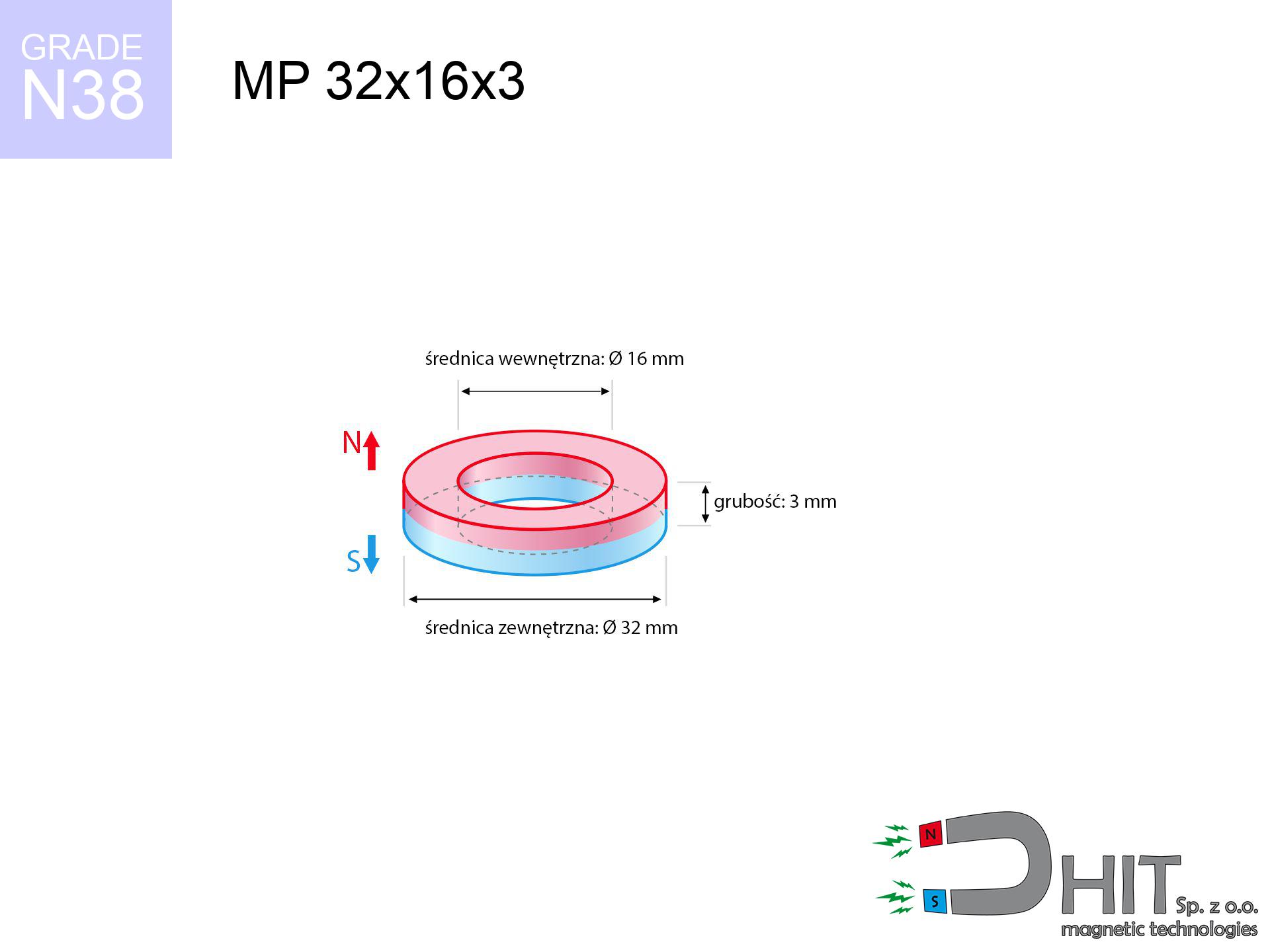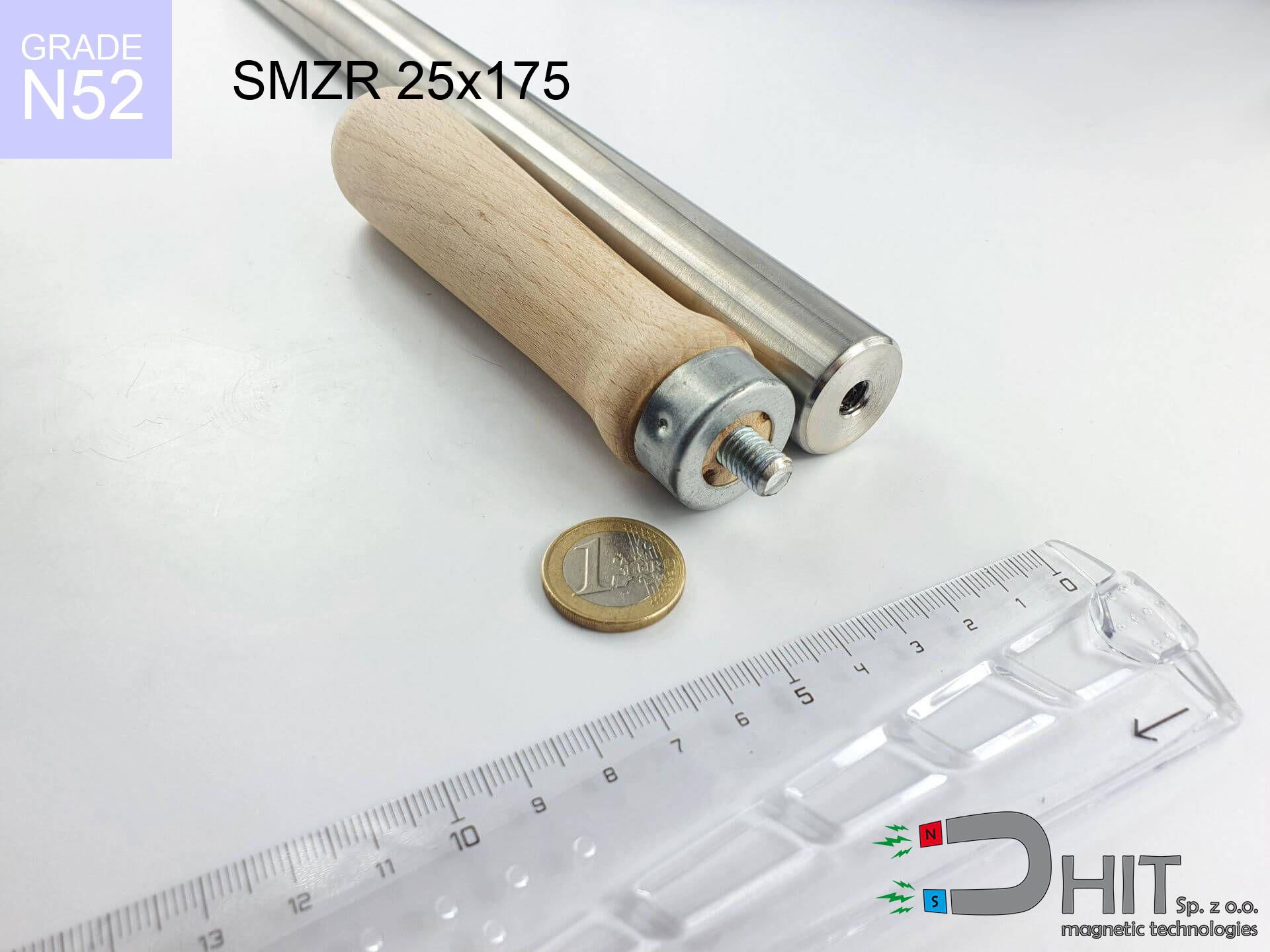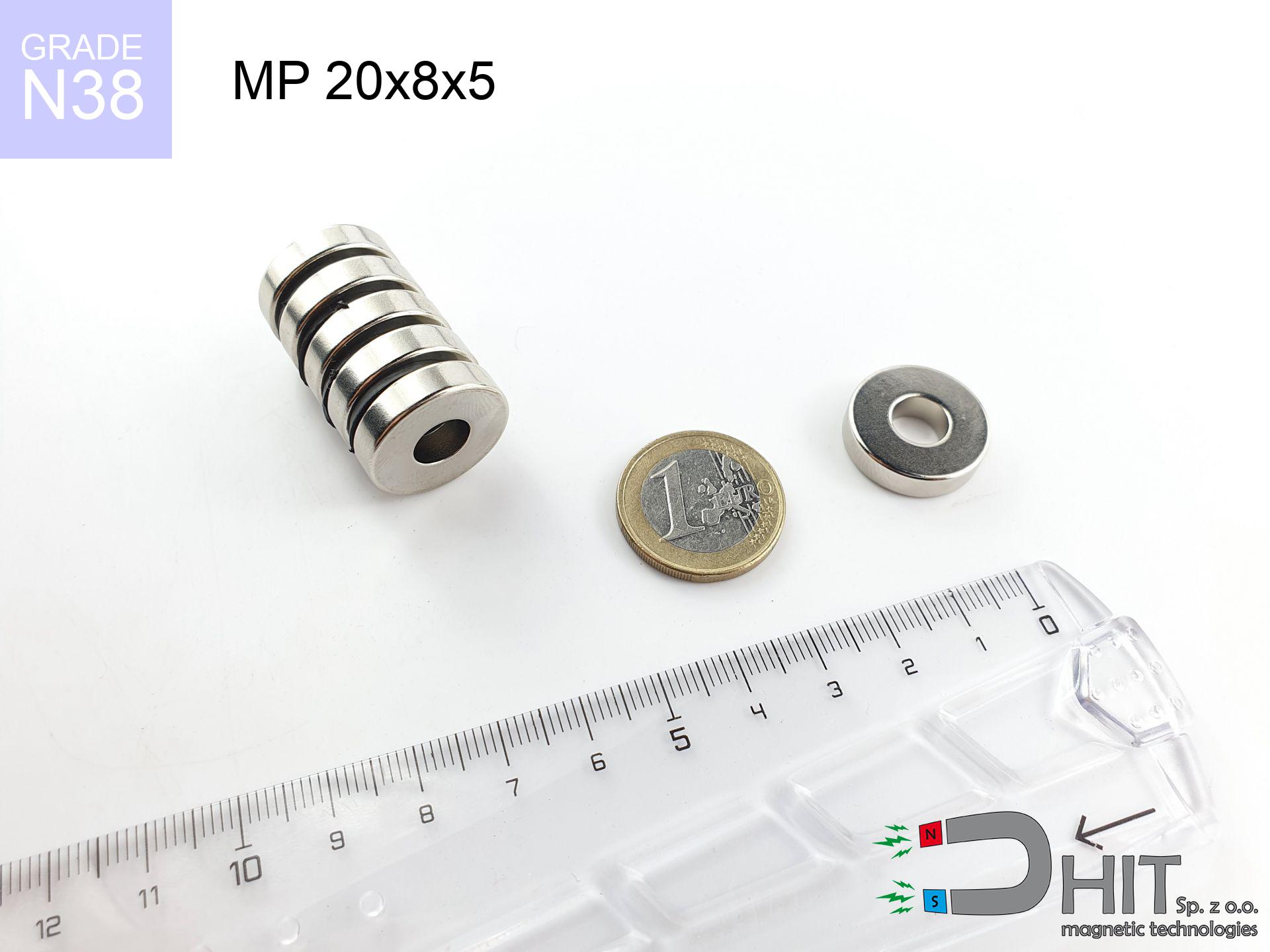MP 32x16x3 / N38 - neodymium magnet
ring magnet
catalog number 030198
GTIN: 5906301812159
external diameter Ø
32
mm [±0,1 mm]
internal diameter Ø
16
mm [±0,1 mm]
height
3
mm [±0,1 mm]
magnetizing direction
↑ axial
capacity ~
2.74 kg / 26.87 N
magnetic induction ~
103.36 mT / 1,034 Gs
max. temperature
≤ 80
°C
catalog number 030198
GTIN: 5906301812159
external diameter Ø
32 mm [±0,1 mm]
internal diameter Ø
16 mm [±0,1 mm]
height
3 mm [±0,1 mm]
magnetizing direction
↑ axial
capacity ~
2.74 kg / 26.87 N
magnetic induction ~
103.36 mT / 1,034 Gs
max. temperature
≤ 80 °C
5.24 ZŁ gross price (including VAT) / pcs +
4.26 ZŁ net price + 23% VAT / pcs
bulk discounts:
need more quantity?Don't know what to buy?
Call us tel: +48 22 499 98 98 or get in touch through contact form on the contact page. You can check the mass and the appearance of neodymium magnets in our power calculator force calculator
Orders placed by 2:00 PM will be shipped on the same business day.
Specification: ring magnet 32x16x3 / N38 ↑ axial
Magnetic properties of the material N38
Physical properties of sintered neodymium magnets Nd2Fe14B
Shopping tips
Advantages as well as disadvantages of neodymium magnets NdFeB.
Apart from immense power, neodymium magnets have the following advantages:
- They do not lose their strength (of the magnet). After approximately 10 years, their strength decreases by only ~1% (theoretically),
- They are exceptionally resistant to demagnetization caused by an external magnetic field,
- In other words, thanks to the shiny coating of nickel, gold, or silver, the element acquires an aesthetic appearance,
- They have very high magnetic induction on the surface of the magnet,
- Magnetic neodymium magnets are characterized by hugely high magnetic induction on the surface of the magnet and can operate (depending on the form) even at temperatures of 230°C or higher...
- The ability for precise shaping and customization to specific needs – neodymium magnets can be produced in a wide range of shapes and sizes, which amplifies their universality in usage.
- Significant importance in modern technologies – find application in computer drives, electric drive mechanisms, medical apparatus and various technologically advanced devices.
Disadvantages of neodymium magnets:
- They can break when subjected to a powerful impact. If the magnets are exposed to impacts, we recommend using magnets in a protective case. The steel housing in the form of a holder protects the magnet from impacts and at the same time increases its overall strength,
- They lose strength at high temperatures. Most neodymium magnets experience permanent loss of strength when heated above 80°C (depending on the shape and height). However, we also offer special magnets with high temperature resistance, up to 230°C,
- They rust in a humid environment - during outdoor use, we recommend using waterproof magnets, such as those made of rubber or plastic,
- The use of a cover - a magnetic holder is recommended due to the limited production capabilities of creating threads or complex shapes in the magnet
- Health risk associated with microscopic parts of magnets can be dangerous, in case of ingestion, which is particularly important in the context of children's health. It's also worth noting that tiny parts of these products are able to complicate diagnosis after entering the body.
Notes with Neodymium Magnets
Keep neodymium magnets away from the wallet, computer, and TV.
Magnetic fields generated by neodymium magnets can damage magnetic storage media such as floppy disks, credit cards, magnetic ID cards, cassette tapes, video tapes, or other similar devices. They can also damage televisions, VCRs, computer monitors, and CRT displays. You should especially avoid placing neodymium magnets near electronic devices.
Never bring neodymium magnets close to a phone and GPS.
Neodymium magnets are a source of intense magnetic fields that cause interference with magnetometers and compasses used in navigation, as well as internal compasses of smartphones and GPS devices.
Magnets should not be treated as toys. Therefore, it is not recommended for youngest children to have access to them.
Not all neodymium magnets are toys, so do not let children play with them. Small magnets pose a serious choking hazard or can attract to each other in the intestines. In such cases, the only solution is to undergo surgery to remove the magnets, and otherwise, it can even lead to death.
The magnet is coated with nickel - be careful if you have an allergy.
Studies clearly indicate a small percentage of people who suffer from metal allergies such as nickel. An allergic reaction often manifests as skin redness and rash. If you have a nickel allergy, you can try wearing gloves or simply avoid direct contact with nickel-plated neodymium magnets.
Magnets made of neodymium are extremely delicate, they easily crack and can crumble.
Neodymium magnets are fragile and will break if allowed to collide with each other, even from a distance of a few centimeters. Despite being made of metal as well as coated with a shiny nickel plating, they are not as hard as steel. In the case of a collision between two magnets, there can be a scattering of small sharp metal fragments in different directions. Protecting your eyes is essential.
Neodymium magnets are not recommended for people with pacemakers.
Neodymium magnets produce strong magnetic fields that can interfere with the operation of a heart pacemaker. Even if the magnetic field does not affect the device, it can damage its components or deactivate the entire device.
Neodymium magnets can attract to each other, pinch the skin, and cause significant injuries.
Magnets will attract each other within a distance of several to around 10 cm from each other. Don't put your fingers in the path of magnet attraction, because a serious injury may occur. Magnets, depending on their size, are able even cut off a finger or there can be a severe pressure or even a fracture.
Neodymium magnets can become demagnetized at high temperatures.
Although magnets have demonstrated their effectiveness up to 80°C or 175°F, the temperature can vary depending on the type, shape, and intended use of the specific magnet.
Neodymium magnets are over 10 times more powerful than ferrite magnets (the ones in speakers), and their power can surprise you.
Familiarize yourself with our information to properly handle these magnets and avoid significant injuries to your body and prevent disruption to the magnets.
Dust and powder from neodymium magnets are highly flammable.
Avoid drilling or mechanical processing of neodymium magnets. Once crushed into fine powder or dust, this material becomes highly flammable.
In order for you to know how powerful neodymium magnets are and why they are so dangerous, see the article - Dangerous powerful neodymium magnets.




![magnetic holder external thread 32x18x8 [M6] GZ / N38 magnetic holder external thread 32x18x8 [M6] GZ / N38](https://cdn3.dhit.pl/graphics/products/um-32x18x8-m6-gz-jix.jpg)
![magnetic separator 32x200 [2xM8] / N52 magnetic separator 32x200 [2xM8] / N52](https://cdn3.dhit.pl/graphics/products/sm-32x200-2xm8-tus.jpg)

